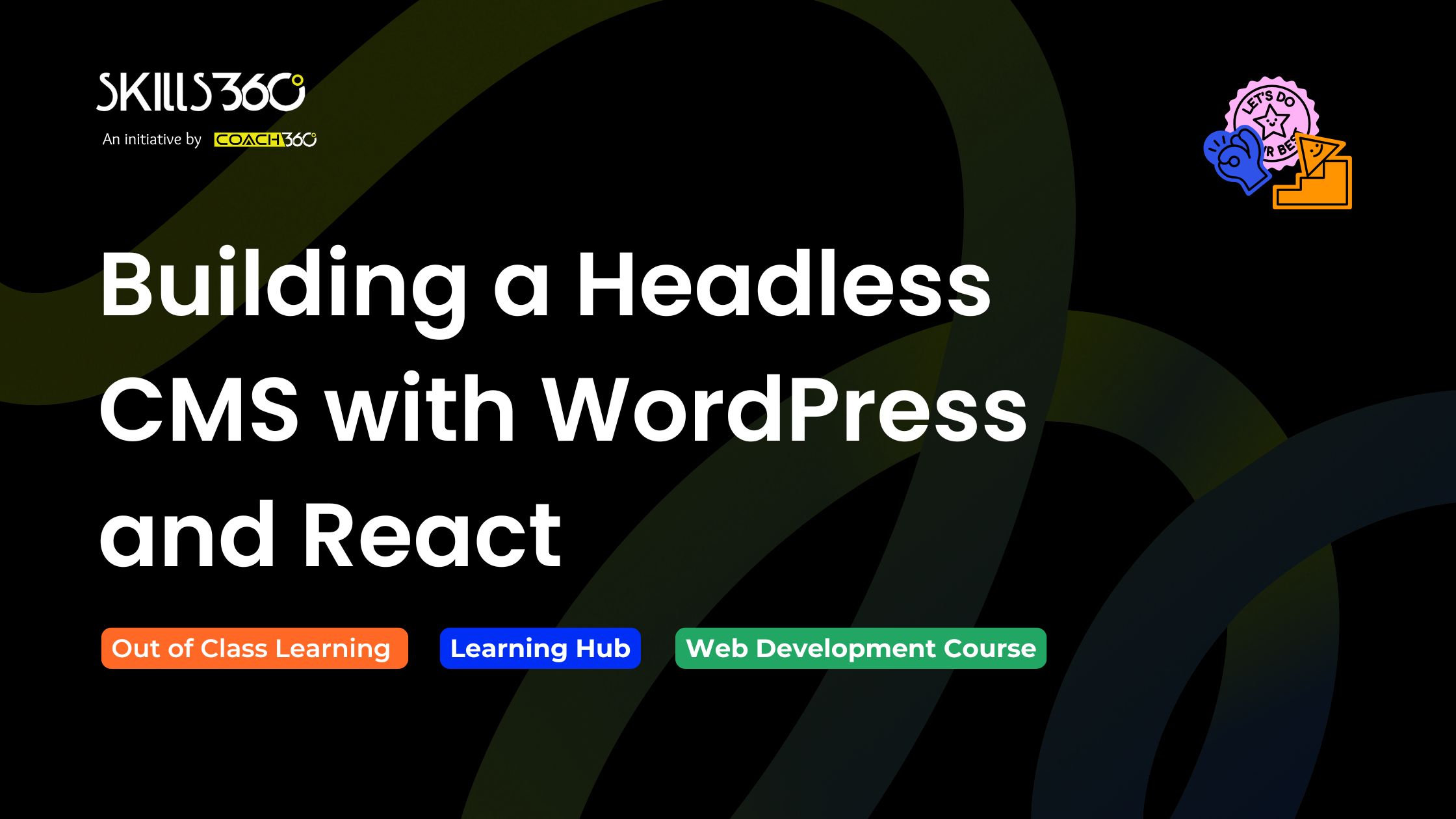- Featured article
- People at Skills360 12 - Aug 2025 | 12 min read

Solutions that give developers more flexibility, faster performance, and smooth scalability have been introduced by the evolution of web development. The headless CMS is one such solution that is gaining popularity quickly. Developers can create highly customized and contemporary web applications by separating the frontend presentation layer from the backend content management system.
This tutorial will show you how to create a headless CMS with WordPress as the content backend and React as the frontend framework. It will also explain why this is a skill that employers are increasingly looking for.
A headless CMS keeps its presentation layer (the "head") and content management and storage (the "body") apart. This frees developers from being constrained by the backend's theming or templating system to use the technology of their choice for content display.
Content and presentation are tightly linked in a standard WordPress installation; how we display content to users depends entirely on your theme. A headless installation, however, is different. With a headless installation, React (or whatever other frontend technology) will fetch the data and present it however you like, while WordPress will be used solely for content creation, storage, and management.
WordPress remains one of the most popular content management system (CMS) platforms in the world due to its huge plugin ecosystem, user-friendliness, and community. It provides a user-friendly admin panel for non-technical content creators to publish and manage data, even in a headless installation.
There is no more straightforward way to get posts, pages, custom post types, and custom fields than through the REST API in WordPress. The API connects the React application to the backend so you have a live real-time data update and no need to refresh the page.
After taking a headless CMS development course in Karachi, experienced developers in Karachi (or elsewhere) can leverage that knowledge to create high-performing modern websites for users here and abroad.
One of the most potent frontend JavaScript libraries is React, which is maintained by Facebook and utilized by major players in the market like Netflix, Airbnb, and Uber. For a headless CMS setup, it makes it possible to create quick, interactive, and reusable user interface components.
Through the use of GraphQL or the REST API, you can integrate React with WordPress data to:
You must create a clear development flow in order to set up a headless CMS using WordPress and React:
Set up WordPress to Run Headless:
Get the React application ready:
Optimising Style and Performance
Setting Up and Hosting
Scalability: Easily add new frontends (mobile apps, kiosks, smart devices) pulling from the same content backend.
Performance: More recent JavaScript frameworks offer more fluid interactions and quicker page loads.
Design Freedom: Complete front-end control free from WordPress theme restrictions.
Future-Proofing: The backend content structure won't be affected when React-based frontends are upgraded or replaced.
Businesses may benefit from this architecture's quicker development cycles and capacity to adjust to new platforms. It indicates a highly sought-after skill set for developers.
Nowadays, headless CMS structures are used to build a large number of popular websites, news portals, and e-commerce platforms. For instance:
These examples show how headless WordPress solutions extend well beyond conventional blog configurations.
Enrolling in a headless CMS development course in Karachi may be the best course of action if you want to learn how to build these systems. Usually, these classes cover:
Gaining proficiency in these areas enables you to provide clients all over the world with scalable, high-quality digital solutions.
The best of both worlds is provided by headless CMS development using WordPress and React: the speed, flexibility, and innovation of contemporary JavaScript frameworks combined with the familiarity and content management capabilities of WordPress.
The need for qualified developers in this field will only increase as more businesses move toward dynamic, multi-platform content delivery. Knowing this architecture can help you gain a competitive edge whether you work for an agency, as a freelancer, or as a business owner.
With the correct instruction, especially from a specialized headless CMS development course in Karachi, you can begin building innovative, user-friendly, and future-ready websites and applications.


Get curated emails on out of class learning and work on your skills on your free time.